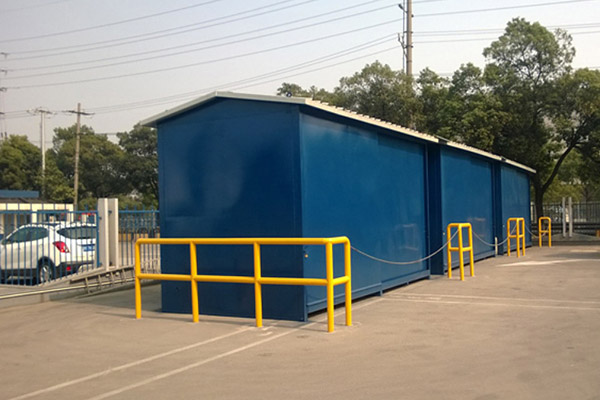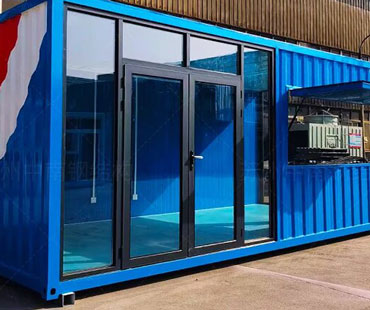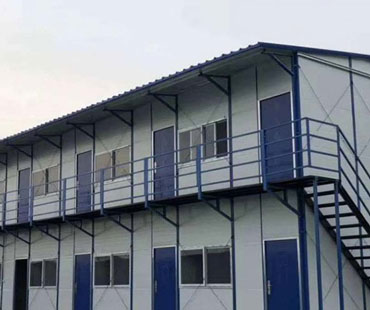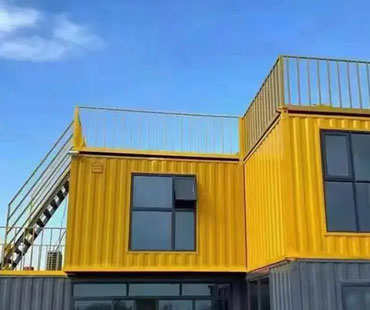In recent years, the concept of container housing has gained significant traction as an innovative solution to urban living challenges. As cities around the world face soaring real estate prices, increasing populations, and the need for sustainable building practices, shipping containers have emerged as a versatile and creative architectural option.
The idea of transforming shipping containers into habitable spaces is not entirely new; however, it has recently gained popularity due to its affordability and sustainability. A standard shipping container measures 20 or 40 feet in length, offering approximately 160 to 320 square feet of space. This compact yet sturdy structure provides a blank canvas for architects and designers to create functional living spaces that can be customized to suit various needs.
Container homes are particularly appealing in urban areas, where traditional housing options are often limited and expensive. By repurposing used shipping containers, homeowners can significantly reduce construction costs while also contributing to environmental sustainability by recycling materials that would otherwise be discarded.
One of the most exciting aspects of container homes is their architectural flexibility. Designers can stack, arrange, and connect containers in countless configurations, allowing for unique and innovative designs. Here are a few creative applications of container architecture:
1.Modular Designs: Container homes can be designed as modular units that can be expanded or reconfigured based on the homeowner's needs. This flexibility allows for the addition of more containers as families grow or lifestyles change.
2.Multi-Story Structures: By stacking containers vertically, architects can create multi-story homes that maximize limited urban space. This design approach not only provides more living area but also offers stunning views and unique aesthetics.
3.Open Floor Plans: The interior of a shipping container can be modified to create open floor plans that promote spaciousness and flow. Removing internal walls and adding large windows can transform a compact space into a bright and airy home.
4.Sustainable Features: Container homes can incorporate sustainable design elements such as green roofs, solar panels, and rainwater harvesting systems. These features contribute to energy efficiency and reduce the overall environmental impact of the dwelling.
5.Hybrid Structures: Many architects are experimenting with hybrid designs that combine shipping containers with traditional building materials. This approach allows for creative contrasts and can enhance the visual appeal of the structure.

Container homes offer numerous advantages that make them an attractive option for many people:
1.Affordability: The cost of purchasing and converting a shipping container is often significantly lower than that of traditional building methods. This affordability makes homeownership accessible to a broader range of individuals and families.
2.Speed of Construction: Container homes can be built quickly, as the basic structure is already in place. With pre-fabricated designs and efficient construction techniques, homeowners can move in within a matter of weeks.
3.Durability: Shipping containers are designed to withstand harsh conditions at sea, making them incredibly durable and resilient. This durability translates to a long lifespan for container homes, reducing the need for frequent repairs.
4.Mobility: Container homes can be relocated easily, making them an ideal option for those who value flexibility. Homeowners can move their residences to new locations without the hassle of conventional house moving.
5.Minimal Environmental Impact: By repurposing used containers, homeowners contribute to waste reduction and promote sustainable living. Additionally, the energy-efficient features often integrated into container homes further minimize their ecological footprint.
Despite their many advantages, container homes also come with challenges that must be addressed. Building codes and zoning regulations can vary widely, and navigating these legal frameworks can be complex. Additionally, proper insulation and ventilation are crucial to ensure comfort in container homes, particularly in extreme climates. Homeowners must also consider the potential for rust and corrosion, necessitating regular maintenance.
Container houses represent a fascinating intersection of creativity, sustainability, and practicality in modern architecture. As urban areas continue to grapple with housing shortages and environmental concerns, the innovative use of shipping containers offers a viable solution that meets the demands of contemporary living. With their affordability, versatility, and unique design possibilities, container homes are not just a trend; they are a glimpse into the future of housing. As more architects and homeowners embrace this approach, we can expect to see a growing number of stylish, functional, and sustainable container homes transforming our landscapes.


